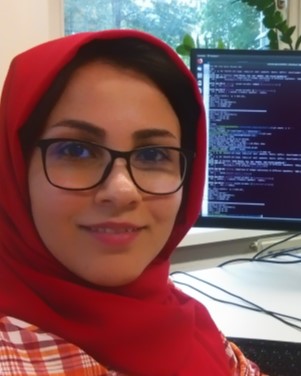Mohadese Ramezani (Isfahan University of Technology) will be working on "Fractional macroscopic models for evacuation of bees:
Numerical study and analysis" during her stay at the University of Graz.
The growing population of large cities has increased the importance of studies of pedestrian flow during the last decades. There are different types of models for pedestrian flow such
as cellular automata, social force models, velocity-based models, continuum models, hybrid models, behaviour models and network models, which can be divided into microscopic and macroscopic models. Microscopic models consider pedestrians in detail while macroscopic models describe a pedestrian flow wherein interactions are studied individually.
However, the choice of modelling method is difficult.
Her research aims at
- extending existing 2D-approaches to a 2D-manifold in 3D geometry originating from a beehive.
- appling that extended approach to the robots guided movement of a beehive and simulate that.
- generalizing the approach to more complex fractional macroscopic models which are more close to individuals flow in reality
- establishing some efficient numerical methods to solve the proposed models in order to get more reliable results.
- considering some practical examples to confirm the numerical and theoretical results.
During her fellowship M. Ramezani will be working with COLIBRI member Prof. Gundolf Haase at the Department of Mathematics and Scientific Computing.
